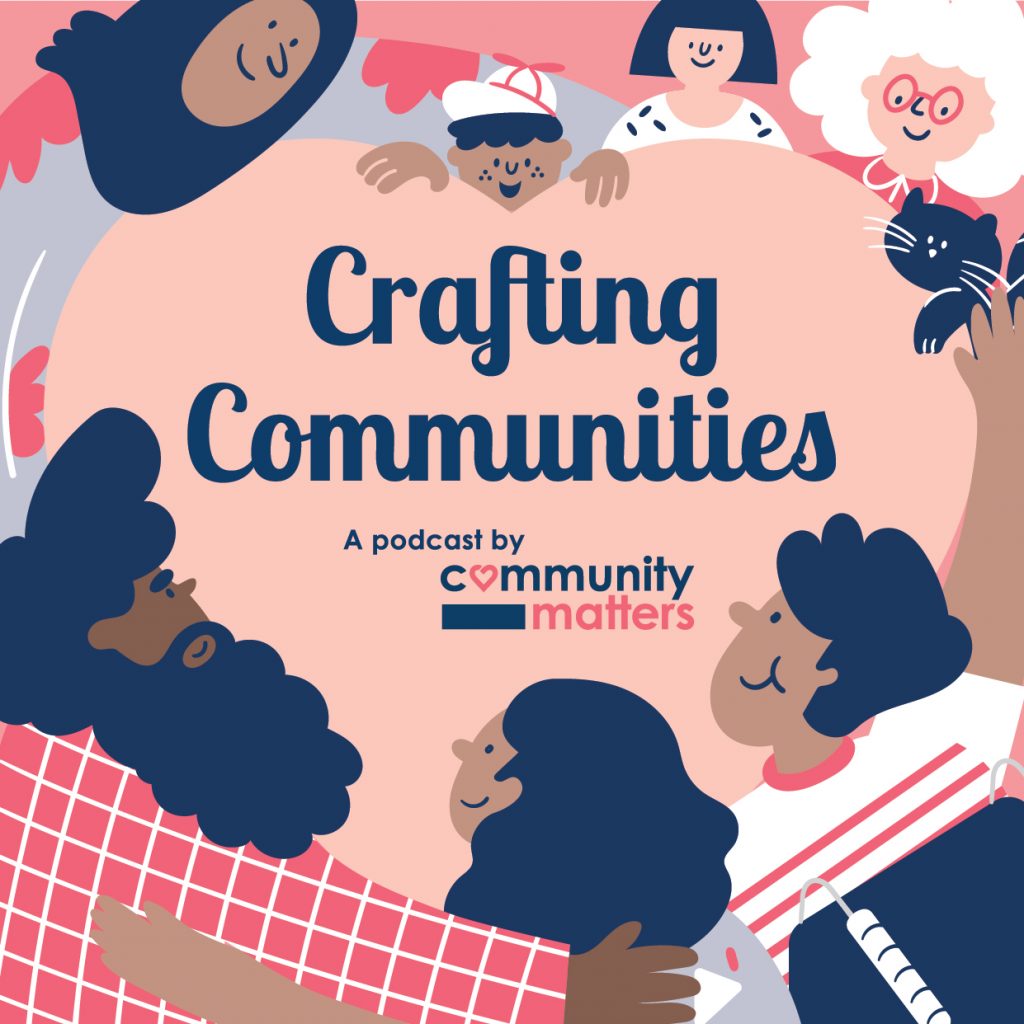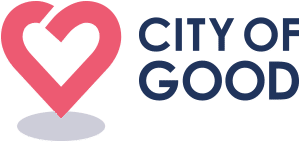Transcript
Grace Ann Chua [00:05]: “Hello! Are you new here?” Welcome to Crafting Communities. I’m Grace, your host and friend in your journey to shape a better community experience for the people you care about. Joining a new group and how you welcome can make or break their decision to stay in the group. What can you do to make a newcomer feel welcome in your community? In this episode, we’ll hear about the dos and don’ts when onboarding from Shaily, a HR expert, and Li Woon, from The Volunteer Switchboard. Hi Shaily and Liwoon – great to have you on the show!
Li Woon Churdboonchart [00:34]: Hello, Grace.
Shaily Gupta [00:35]: Hi, Grace. It’s a pleasure to be here today.
Grace Ann Chua [00:38]: Thanks for joining us for this episode. Li Woon, what does Volunteer Switchboard do and who are the communities that you serve?
Li Woon Churdboonchart [00:43]: We started in 2013, and started as a volunteering experience for all the people who don’t know where to do volunteering. So, they come to us and we do volunteering together. We started with just the public. Thereafter, a lot of corporates, charities came to look for us to craft the different volunteering experiences for them as well. So, we do schools, corporates, and lots of public.
Grace Ann Chua [01:06]: Awesome. And Shaily, you are a human resource expert in a consultancy firm. What is the purpose of your work?
Shaily Gupta [01:12]: Yeah, first, I want to say it’s incredible work that your team does, Li Woon, that’s amazing. So, my work as an HR advisor with Engee Advisors is largely in terms of making a difference that matters, especially using people- strategy. So, I kind of do a lot of work with middle managers. Post pandemic, the leadership has been pivoted differently, which is empathetic leadership. So, how do you create managerial effectiveness in this new normal? And that is what my entire effort, my entire consulting work is geared towards.
Grace Ann Chua [01:47]: Awesome. So, my first question to Shaily is, why is onboarding important?
Shaily Gupta [01:51]: You know, this reminds me of a very, very interesting story. I have this person who joined me, and mind it, I was in a leadership position at that time as – a chief human resource officer, and the person left the company in a week’s time. While you could be teaching about all [the] goodness of onboarding, why it’s important, it made me sit back and think what went wrong? – So, I think one big learning that I had from that episode was that probably the expectation sharing that one had done with the person who came onboard was really not in line with what the person perceived. In my mind, I shared the role very candidly, I shared the transformation journey very candidly, I shared the challenges. But somewhere, it was not received with the same intensity. When she came onboard, she met with many other people, she realized, culturally, it was a very tough place to be able to make a difference. And to be fair to the individual, she decided to kind of step out and not be part of this. So, I personally feel with that episode, what made me think is as a leader, onboarding is extremely critical, and welcoming the person, setting up the right expectation, and also handholding to avoid these early exits.
Grace Ann Chua [03:14]: Li Woon, any thoughts on why is onboarding important?
Li Woon Churdboonchart [03:16]: Personally, when I was going through the volunteering with different volunteering groups, it was quite daunting as a new joiner. You didn’t know the protocol; you didn’t know what to do and how to do it. And then when you sign up to say, “I’m committed to do from this time to that time,” you go in, you expect to be able to be orientated across the organisation, what not. I just remembered one of them. I went in, I didn’t know what to do, I just stood there, I was not inducted to anything at all, nobody told you what you need to do. And then suddenly, somebody just say, “You got to do this.” So, we had to try to get into the role of volunteering, not knowing whether we will be creating any possible harm as well, because we’re very new to the organisation, right? We don’t know where our role was.
Li Woon Churdboonchart [04:04]: After the experience, I actually didn’t bother going back to volunteering again with that organisation, because I didn’t know my purpose in that organisation. So, it makes a huge difference. When I saw other corporates being onboarded to volunteering as well, that was crazy. I saw an organisation where they had an Asia Pacific conference where everybody came to Singapore, all your senior management was there. So, the local management wanted to showcase that there is a lot of good work that can be done on the ground in Singapore. Singapore is not like a developed country that doesn’t need help. So, when they actually came on board, they had about 60 senior management going to that event. I was really, really taken aback because they were left on the one hand, you will see all the beneficiaries or the service users and the senior management was sitting on the right hand, and there was no intermingling. And that actually lasted for an hour.
Grace Ann Chua [04:59]: Oh, wow.
Li Woon Churdboonchart [05:02]: Yes, nobody attended to anybody. And from a management perspective, that’s 60 man hours lost. We could have done a lot of things with that 60 man hours. When we actually asked the management, what was their experience, they were not attended to, they didn’t know what to do. And then while the activity seems interesting, it felt like it’s a Shangri-La of volunteering. That’s not the impression, that people want to walk away. They didn’t want to do anything more with the organisation. So, that’s a lot of different implications that come along of a bad onboarding experience.
Grace Ann Chua [05:35]: What I hear from both of you is the implications of bad onboarding. Man Hours are lost, the cost of hiring and all the resources put into recruitment are wasted. And for the new joiner not to continue on there’s a reputational risk. Because if they have a bad experience they might tell their friends – hey don’t volunteer with this organisation, don’t join this organisation. What are the concerns that we must be conscious of when anybody is joining a new community?
Shaily Gupta [05:57]: Let’s see it from the point of view of a person who’s joining the community. What are you anxious about when you change your assignment? When you join a new community? When you join a new work?
Grace Ann Chua [06:08]: Not knowing anybody. You have no idea who the other people are, who your boss is going to be, who your colleagues are going to be, what the culture is like?
Li Woon Churdboonchart [06:17]: Are they going to be nice to you? And are you going to be welcomed? I think all of that is going to be quite worrying.
Shaily Gupta [06:23]: Absolutely. So Grace, what you said is people, right? Would I have a social network? I’m leaving my set of good friends at work behind. I’m coming and joining a new community. Do I have friends at the new place? So, those are the people that I’m worried about– my social network right? The second is, I was an ace performer there. Would I understand your processes and systems to be able to deliver well? Will I be productive here? Will I be able to excel and be able to contribute with my passion here? Because your processes and systems could be very complex and I’m anxious about it. Are you going to give me some training or are you just going to leave me at work just like that? The third, of course, is the performance. I could have the skills, I could have the capability and the passion, but does your culture give me enough freedom to innovate, gives me enough freedom to bring the best of myself to work? And that is the reason cultural alignment is extremely important. Or every time I do something, is there a leader walking up to me and say, “Oh, this is not how we do it here. Oh, culturally, we’re very different. I’m sorry, you are such a cultural misfit here.”
Grace Ann Chua [07:34]: I mean, when you said the word “performance”, it actually got me thinking even what success looks like in this new organisation or this new community. You could come from a different environment where you’re clear about what success looks like or your KPIs are, but when you move into a new community, you don’t know what is considered doing a good job. So, I think even performance from that, what you’re working towards and clarity about that as well.
Shaily Gupta [07:55]: Yeah, absolutely. So, that’s the three P Model I think one needs to be careful about when you’re designing an onboarding program: People, Process, Performance. How do you make sure that you’re giving enough opportunity to welcome the new onboarder to know more people, give them proper process training, and help them to culturally align to be able to deliver well.
Grace Ann Chua [08:19]: Li Woon, what else do you consider when you onboard others?
Li Woon Churdboonchart [08:24]: I think the most important thing is from the organisation perspective. It’s what do you regard your people as? I think that mindset is really important. I often ask my different charities, “Volunteers are … What are they?” Then I ask them to fill in the blanks. Some people will say “volunteers are good resources”. Some people will say “volunteers are helping us”. But the most important thing if I switch that mindset into “volunteers are my people”, so how do you want to treat your people? Because if you put them as volunteers are resources, sometimes you then take them as just resources, right? They fill in a gap and then you finish the job, and that’s it.
Grace Ann Chua [09:05]: Dispensable.
Li Woon Churdboonchart [09:06]: Yes, very dispensable. But if you think that they are your people, and you want to be able to grow them with you along with the organisation, the whole mindset changes. So you’ll be very, very invested in their performance, their wellbeing, and how they will be able to do better at the work that they do. So, how they culturally fit into your organisation; you make them feel welcome; are you going to teach them whether to do [and] what to do – the whys are you doing this rather than just do it and then they just walk away [with], “I don’t know what I’m doing.” So, it really changes your mindset of how you treat your people in terms of who you want to onboard as volunteers. So, if I say, “These are my volunteers,” and I call them VSB family, that has got a different connotation too, right, because as a part of the family, if anything that comes in, we are here to help, and we can help you to help others. So, that mindset is important.
Grace Ann Chua [09:57]: Thanks so much, Li Woon. Anything else to add, Shaily?
Shaily Gupta [10:00]: I guess what matters is to make sure that we focus on every touchpoint of their experience during onboarding and make it as comfortable as possible.
Li Woon Churdboonchart [10:11]: Also to add with that, human touch is so important. Sometimes you got to think about the role of technology. A lot of people are going – let’s get the QR code scanned, right? Can you take your attendance? So, I’m going to go to a machine to be welcomed by a machine and scan my attendance. So, the human touch – because again, these are my people and I need to make sure that there’s a human touch involved in everything that we do, so that they will feel welcomed. It’s not just sitting in an orientation and I’ll go through an induction through the internet, and then after that I will get to know each person’s profile by searching on the internet, who is who. But that human connection is very important as part of the onboarding process. That’s something that we need to know, right? So when we’re building our technology, everyone was asking me, “Li Woon, can we have a QR code? It’s so effective, efficient. Don’t have to spend time to take attendance.” I was like, “When you take attendance, do you say ‘Hi how’s your day? Oh, you’re new here today. So, how can I help? Do you have any questions?’” That kind of human touch, once they are connected to you, they will be here longer to stay with you.
Shaily Gupta [11:12]: Interesting that you say that, Li Woon, because I always say that automation is augmentation, which basically means that you are bringing efficiency in the process, but use that space and time to bring in more personal touch and human touch. Instead of getting stuck in the process like, “Have you signed here, have you signed here”, you can have more meaningful conversations while the person is using technology to mark their attendance, in this case, probably. You can spend that time having more personal chat. “How was your day? How did you reach? Was it easy for you to reach work? Do you need any help?”
Grace Ann Chua [11:46]: Thanks so much, Shaily and Li Woon, for sharing with us about your considerations for onboarding– the bad experiences and the lessons learned from them. Before we wrap up, one last question would be, what is one takeaway that you would like to share with our listeners today about onboarding?
Shaily Gupta [12:01]: Interesting. I think if I were to simply put this, I would put this as, imagine yourself like a host of a party. If you were to have guests over, are you going to just let them be? Or are you going to go walk up to them, give them a warm welcome, show them around, show them where the food is, where the drinks are, introduce them to all the relevant people. So, onboarding is almost like being a host. Just keep that in mind.
Li Woon Churdboonchart [12:26]: We are dealing with people, and it’s about you and I. Treat people the way that you want to be treated. So, the entire experience, back to what Shaily was sharing in the beginning, imagine how you would have felt when you’re going through that process, and then help the people along. So, treat people the way that you want to be treated.
Grace Ann Chua [12:45]: Yeah. Thanks both.
Li Woon Churdboonchart [12:46]: Thank you.
Shaily Gupta [12:47]: Thank you.
Grace Ann Chua [12:48]: Hey there listeners – like what you heard today? In the next episode we’ll give you useful tips on how to structure better onboarding experiences.























